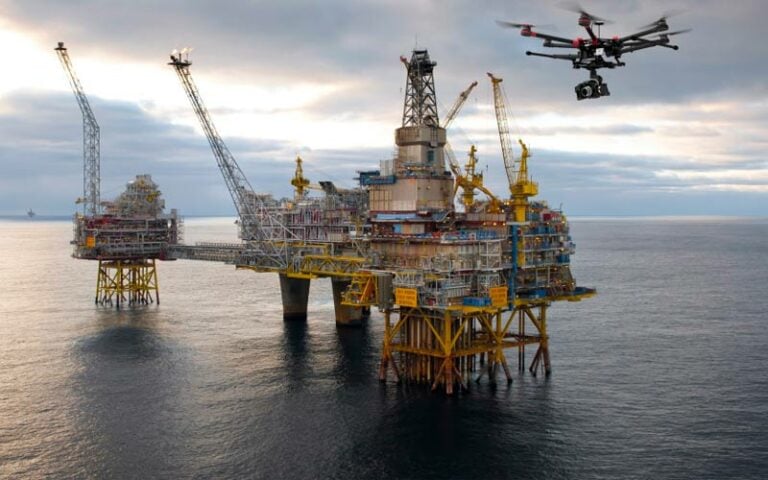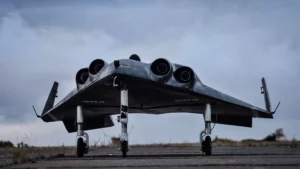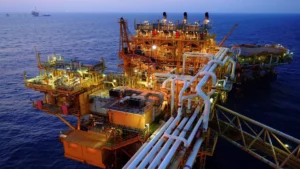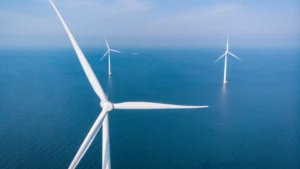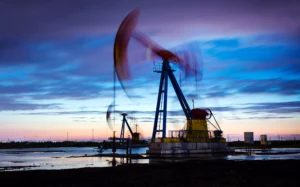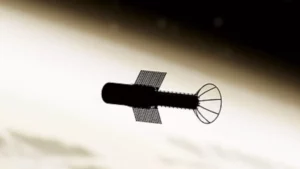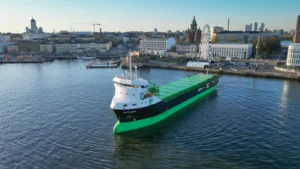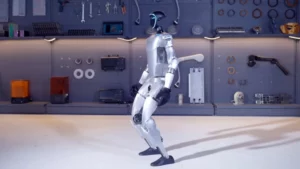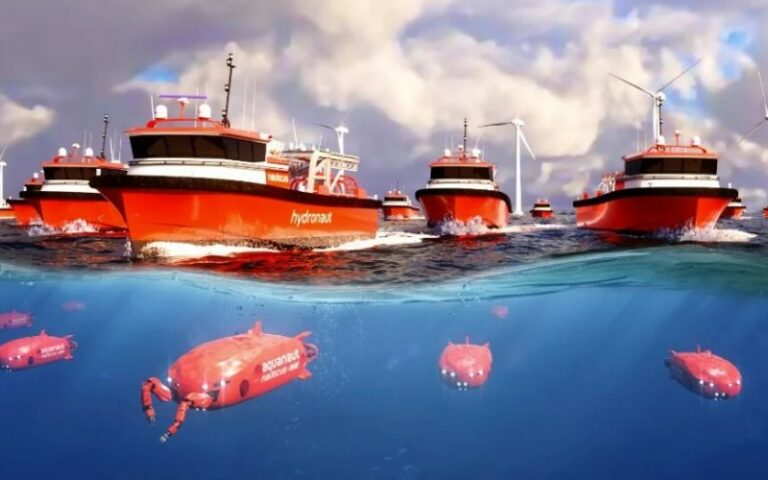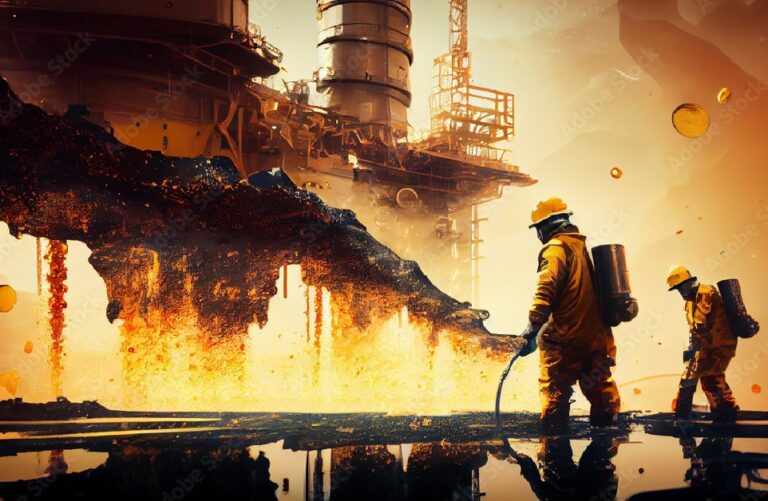Author: Ing. Mayuly Rodríguez, June 21, 2023.
Introduction
With the emergence of a robust technology industry around the world, advances in drones and robotics are driving standards for safety, efficiency, reliability, and cost-effectiveness in inspections of offshore oilfield systems, equipment, and structures.
In the past, monitoring of offshore oil platforms was carried out manually, which involved costly resources and high risk for workers. However, thanks to rapid advances in technology, these devices are opening doors to an innovative maritime world due to effective data collection and improved productivity. These evolutions allow the constant monitoring of the platforms, preventing failures and attending to any incident immediately.
Drones are exceptional for reviewing offshore platforms. These unmanned aircraft cover large areas of difficult access in a very short time, capturing data in real time and providing an accurate view of the condition of the structure. Robotics has introduced underwater robots capable of carrying out exhaustive inspections and detecting problems mainly in the depths, preventing them from becoming critical situations. These teams are also equipped to apply certain non-destructive tests and carry out partial repairs.
Drones: Real-time aerial surveillance for offshore oil platforms
When it comes to monitoring offshore platforms, today, at an industrial level, these devices have become one of the most versatile and reliable options, because they present a set of specialized skills that make them operate efficiently when we refer to industrial purposes. They can group multiple tasks together during data collection, allowing operators tangible surveillance in real time.
Some aspects of the use of drones are described below
Description: They are aircraft equipped with state-of-the-art technology, designed to cover large areas and altitudes, therefore, their great contribution during the inspection of oil platforms. They are highly manoeuvrable, when handled by an operator with the required skills. They can have various specialized technological accessories to obtain the greatest amount of information. Their aerodynamic design and lightweight structure allow them to reach high speeds and resist adverse environmental conditions.
Benefits: In the first place, when you eliminate the exposure of personnel to dangerous conditions generated by inspections in high-risk areas, it brings with it one of the greatest advantages, which is the safety of personnel. These devices are controlled remotely from a secure location, avoiding potential accidents or injuries and saving time and resources compared to traditional methods.
Additionally, these devices transmit information in real time, offer exhaustive and fast coverage of infrastructures, capture images with remote sensing technology to create 2D and 3D maps of the evaluated areas, and manage to detect damage or immediate failures. They have the ability to take thermographic and hyperspectral images, they carry gas sensors and due to their rapid availability they can make emergency or improvised flights.
These are fast, accurate and critical to diagnosing damage before it can lead to long and costly downtime 1 .
Applications: Mainly, they are used for visual inspections at heights, confined spaces, inaccessible areas and areas with toxic substances or gases, obtaining images, videos and audio for better evaluation, allowing the creation of system maps, collecting reliable data for analysis and predictive maintenance.
They are also used for scheduled monitoring, leak detection, transportation of specific items, among other alternate applications. It is worth mentioning the drones with ultrasound meters , which have specific structures to integrate a meter and measure wall thickness.
The combination of all this information that can be obtained allows experts and even operators to safely and sustainably carry out control of various variables that can be critical.
Scans of complete structures generate accurate 3D maps or full digital copies of decks that help teams quickly detect and classify infrastructure changes over time 1 .
Robotics: Surveillance in aquatic environments in real time for oil platforms
Underwater inspection operations are a complex task that have historically required specialized knowledge and advanced technologies 2 . The extremely dangerous conditions of these environments are called high risk, for this and many other reasons, the use of robotics is a fundamental alloy for companies. Certain aspects of this technology are described below:
Description of underwater robots (ROV): Also called remotely operated equipment, these equipment have navigation and depth sensors, can be controlled manually and with automatic control functions; they have freedom of movement and latest generation software; They are equipped with a variety of technological accessories such as cameras, remotely operated arms, sensors, lamps, among others, which allow them to explore and inspect areas of difficult access to underwater structures.
They detect and record large amounts of data that are mostly used to carry out preventive analysis, they also observe possible failures, damages or anomalies, allowing this, a quick response and decision making by the operators, and thus, maintaining the integrity of the facilities. .
Benefits of robotics in maritime inspection : It facilitates partial maintenance, preventing the risk of human accidents, it contributes to reducing the risks of environmental disasters, by preventing possible unexpected accidents that cause unplanned operational stoppages on maritime platforms.
They reach steep and deep corners of the platforms, to monitor, detect any failure in a timely and safe manner. In some cases they remain continuously in the depths of the oceans, which guarantees a rapid response to any eventuality.
Robotics applications in the maritime sector: Its main applications are visual inspections, monitoring and maintenance of submerged structures, it also has the ability to collect samples of elements or products that need to be studied. They can apply non-destructive tests such as ultrasound to measure the thickness of pairs, capture images, videos and audio that are very useful for effective decision making. Today, some companies have already created interfaces that use virtual reality (VR) inside ROVs for monitoring structures on the seabed.
Underwater Inspection Robotics Case Study: Discovery Vision System Highlights Potential to Revolutionize Underwater Surveys and ROV Operations, a Capability Available to Small Rigs Using the Compact 300m Discovery Camera and Large Work Class ROVs with Discovery Stereo of 4000 m. By employing state-of-the-art computing to capture high-quality still images along with low-latency video, you achieve a vision system without compromise. It is now possible for every underwater vehicle to see the depths as the surface is seen 2 .
The Future of Offshore Oil Inspection: Greater Efficiency and Safety at Lower Cost
The new trends in inspection of maritime oil infrastructures are here to stay, their increasingly efficient technological developments promise exceptional safety and reliability in this sector that is so difficult to maneuver.
Promising technological advances to improve maritime inspections: The oil industry is seeing promising technologies to improve efficiency and effectiveness. The integration between artificial intelligence and machine learning in drone and robot systems enables faster and more accurate analysis of the collected data. In addition, increasingly advanced software and sensors, thermographic and hyperspectral cameras, and lasers, allow detailed information to be obtained on the current state of the evaluated infrastructures.
Prospects for Autonomous Inspections and Predictive Maintenance: Advances in artificial intelligence and robotics are enabling the development of autonomous systems capable of independent observations and independent decision making in real time. Additionally, predictive maintenance, based on advanced data analytics and machine learning algorithms, anticipates and prevents failures, reducing costs associated with downtime.
DeepOcean: Plans to test the AID, which can operate in water depths of up to 3,000m, as part of one of its annual campaigns on the Norwegian continental shelf, for an undisclosed operator. “AID can conduct rescheduled inspections of all subsea assets. This means that significant value can be created for operators of offshore energy assets when the same scope can be repeated year after year” 3 .
The robots working on (and off) the offshore oil and gas platform: Subsea robot manufacturer QYSEA, telecom provider KDDI and commercial drone manufacturer PRODRONE have jointly developed and launched a dual drone system for air and marine applications, including maintenance and repair of oil and gas and offshore wind platforms. The Sea-Air Integrated Drone features an aerial drone connected via an electric winch to an underwater drone held in a quick release cage 4 .
Voyis for offshore subsea inspections: The Insight Micro laser scanner system can be deployed for field mapping, pre-lay routes, post-lay pipeline inspection, as-built surveys, metrology, and more. Voyis sensors integrate with survey software provided by sister company, EIVA, to provide real-time results 5 .
Tech companies are now designing robots that can carry out some of the dirtiest and most dangerous activities on oil rigs so humans don’t have to. Offshore Robotics co-owner Dan Allford believes that safety is the main driver of demand for robotics, explaining: “We’re making robots do the things that are dangerous,” he said. “If we hurt a robot, nobody cares” 6 .
Conclusion
The integration of drones and robots in maritime oil inspection is categorizing the way in which these tasks are carried out. These advanced technologies provide greater efficiency and safety at a lower cost. What is most interesting is the long road of technological advances that is yet to come in the offshore oil industry, where trends such as artificial intelligence and intelligent algorithms drive these new technologies.
Ultimately, the combination of drones and robotics represents a promising future for the maritime oil industry, where technological innovation will optimize resources and guarantee the integrity of maritime infrastructures. In the immediate future, it is foreseen that autonomous inspections will be greater than the traditional ones, which makes emerging technologies mandatory for companies in this globally important oil sector.
References
- https://www.offshore-mag.com/business-briefs/equipment-
- https://www.offshore-mag.com/subsea/article/14292206/advanced-rov-vision-systems-are-the-future-of-subsea-operations
- https://www.offshore-technology.com/news/deepocean-autonomous-drone-offshore/#catfish
- https://insights.globalspec.com/article/18335/part-1-the-robots-working-on-and-off-the-offshore-oil-and-gas-platform
- https://www.offshore-mag.com/subsea/article/14291285/dof-using-voyis-equipment-for-subsea-inspections-offshore-brazil
- https://paisminero.com/petroleo/hidrocarburos/25010-el-auge-de-los-robots-en-la-industria-del-petroleo-y-el-gas



